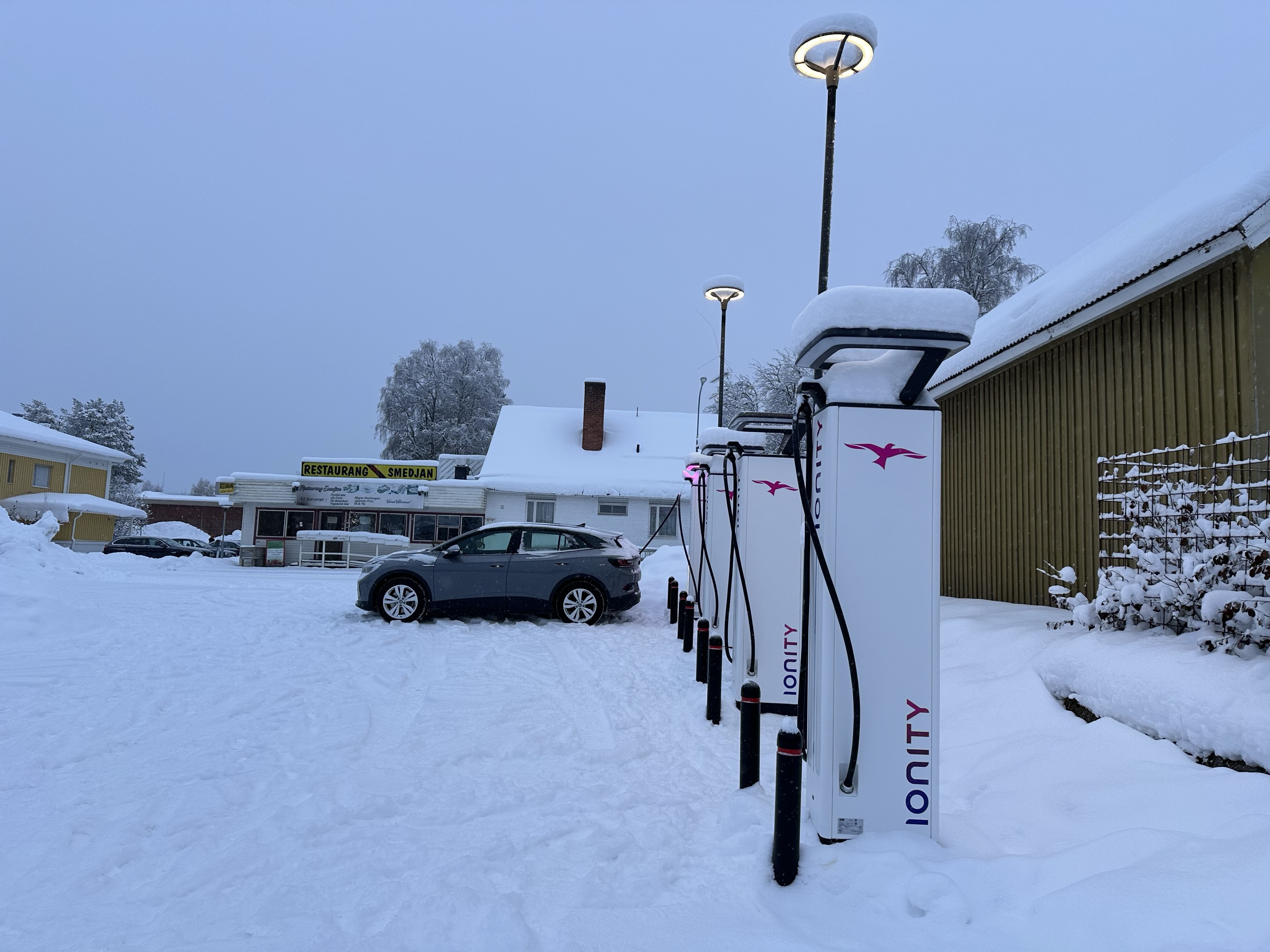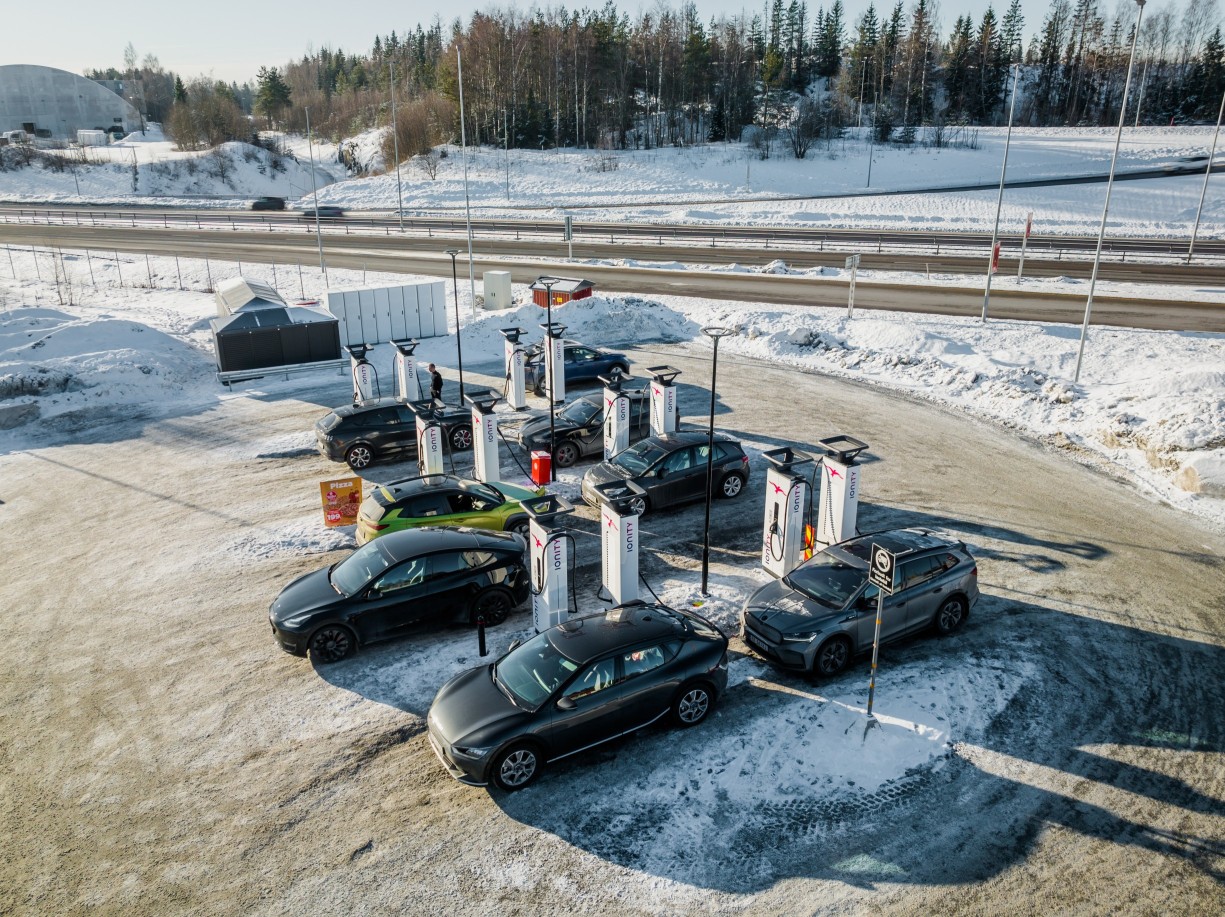Useful tips to increase your EV’s range in winter
This article explains how cold weather affects EV range and offers practical tips to optimize performance during winter. It covers strategies like preheating your car, maintaining tyre pressure, and planning extra charging stops for seamless winter travel.


When winter takes hold of large parts of Europe and covers or cities and landscapes with frost and snow, the scenery is often breathtakingly beautiful. The cold weather can be invigorating, and many people are drawn outside or to the mountains for winter sports. Your electric car is an excellent choice for driving at this time of year — as quiet and cosy as winter and sustainable at the same time.
As there's an IONITY station every 150 to 200 kilometres along the European motorways and main roads, long journeys can be made comfortably in any weather. When planning your journey, keep in mind that the chemical processes in the battery are slower at lower temperatures. This means that you will not be able to achieve the same range with your electric vehicle as on warm days.
That's why we have some useful tips for you here to increase the range of your EV in sub-zero temperatures:
1. Preheat your car and start with a full battery
Park your car in a garage and let it heat up at the socket before you leave. Does your EV offer a timed pre-heating option? Use it to have your car ready to go when you want to leave. This will save you energy while driving and ensure that your battery is warmed up for subsequent charging.
2. Check the tyre pressure
When the roads are covered in snow or slush, your car's tyres have a lot of contact with the surface, which requires more energy to move them. Too little air in the tyres increases rolling resistance even more. Top them up with the right air pressure so that you don't lose range unnecessarily.
3. Drive efficiently
Avoid heavy acceleration and high speeds. This also makes for much safer driving on icy winter roads. Activating the "eco" mode helps you to drive smoothly. This energy-saving function of your electric vehicle also regulates the power consumption of the heating.
4. Use seat heaters instead of air heaters
Seat and steering wheel heaters are much more efficient than air heaters. They are sufficient to keep you and your passengers warm in an already preheated car. Provided that every occupied seat has a seat heater.
5. Plan an additional stop
At low outside temperatures, you should expect a limited range and longer charging times. Therefore, plan additional charging stops for long journeys.
When you stop at an IONITY station to charge your car, your vehicle's battery is already warmed up by the journey, which shortens the charging time. Only charge your car up to 80%, as charging from 80 to 100% can take just as long as charging from 20 to 80%. Therefore, an additional charging stop will save time. Find out more about charging your electric vehicle in winter in this article.
Our most important tip at the end: Please drive carefully and plan a little more time. Enjoy a relaxed journey and look forward to the special magic and adventure that only the winter season offers you. Enjoy your ride!
Read more

Plan your winter EV travels with ease by following simple tips for charging efficiency and convenience. From updating your EV software to preheating your car and optimizing charging stops, IONITY ensures smooth and reliable journeys even in cold conditions.

This article explains how cold weather affects EV range and offers practical tips to optimize performance during winter. It covers strategies like preheating your car, maintaining tyre pressure, and planning extra charging stops for seamless winter travel.
